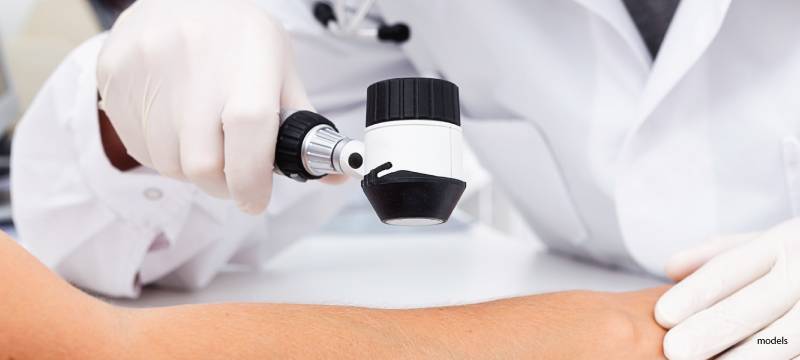Dermatofibroma: Symptoms, Causes, Prevention, and Treatment Options

A dermatofibroma is a benign skin growth, similar to a mole. Dermatofibroma is rooted in the deeper layers of skin, and may protrude or appear even with the skin. This small, firm bump is not harmful, but can be itchy, sensitive to touch, or cosmetically unappealing.
Learn more about dermatofibroma, its symptoms, causes and treatment options.
What are Dermatofibromas?
Dermatofibromas are non-cancerous skin growths that appear similar to moles. These harmless skin lesions don’t need to be treated, but they can be uncomfortable. They may also present a cosmetic concern depending on how large they are and where they are located.
Symptoms of Dermatofibroma
- Appearance: These firm bumps are round or oval and typically small, less than 1 centimeter in size. They are commonly darker than the surrounding flesh. On light skin, they may appear pink to light brown, while on dark skin, they may appear as dark brown or black.
- Location: Dermatofibromas can grow anywhere on the body, but are most often found on the lower legs, arms and upper back.
- Sensation: Dermatofibromas may be tender or painful, especially in response to touch or pressure. The lesion, which might feel like a small stone just under the skin’s surface, can also be itchy.
- Differentiation: At first glance, dermatofibromas may appear like moles, but they differ in that they are rooted in the deepest layers of skin. Unlike a mole, a dermatofibroma will form a dimple when gently pinched, the center of the lesion caving in.
Dermatofibromas don’t often grow in size or change color. If your skin lesion is changing in shape or size, you should see a doctor. Dermatofibroma can sometimes be confused with dermatofibrosarcoma protuberans, a rare type of cancer.
What Causes Dermatofibromas?
Dermatofibromas are the result of an overgrowth of skin cells below the skin’s surface.
The exact cause is not yet known, but most researchers believe this overgrowth occurs as a reaction to trauma. Small cuts, bug bites and other injuries may result in a buildup of skin cells as the body attempts to repair itself.
A compromised immune system may also be a contributing factor. People with systemic immune system issues are more likely to develop dermatofibromas, especially in clusters.
Who Is Susceptible to Developing Dermatofibromas?
While anyone can have a dermatofibroma, they are more common in adults over the age of 20. Women are twice as likely to have dermatofibroma than men. Ethnicity doesn’t appear to affect the rate of dermatofibroma.
Can Dermatofibromas Be Prevented?
Because the cause of dermatofibromas is still unknown, there’s no sure method for preventing them. Proper wound care may help reduce the risk of a dermatofibroma forming, as well as having a generally healthy immune system.
Can I Remove a Dermatofibroma at Home?
Dermatofibromas extend to the deepest layers of the skin. It is not safe to attempt to remove them at home. This can lead to excessive bleeding, infection, and permanent scarring.
Dermatofibroma Treatment Options
Dermatofibromas are not cancerous and don’t require treatment. However, they can be removed for cosmetic reasons or if they are painful or itchy. Treatment options include the following:
- Cortisone Injections can reduce the size of a dermatofibroma, but primarily work to ease associated pain or itchiness.
- Cryotherapy, or cryosurgery, removes the dermatofibroma by freezing the cells with nitrogen.
- Laser Therapy uses heat to target the overgrowth of cells that lead to dermatofibroma.
- Surgical Excision is the most effective method of removal, but can potentially leave behind a scar that’s more visible than the original dermatofibroma.
Any new bump or lesion should be evaluated by your dermatologist.
Disclaimer: The contents of the Westlake Dermatology website, including text, graphics, and images, are for informational purposes only and are not intended to substitute for direct medical advice from your physician or other qualified professional.
